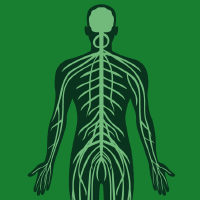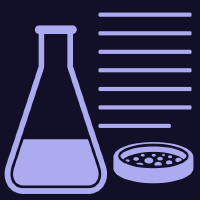Topic Menu
► Topic MenuTopic Editors


Bioactive Natural Products and Synthetic Small Molecules as Potential Investigational Treatments for Neurodegenerative Diseases
Topic Information
Dear Colleagues,
The prevalence of Alzheimer’s disease (AD) is continuously growing worldwide, which leads to great social–economic burdens. Despite the great therapeutic improvement researchers have achieved in the past few decades, novel treatments targeting Alzheimer’s disease remain an urgent need. AD is a progressive neurodegenerative disorder, and patients are characterized by dysfunctions of behaviors, memories, and spatial awareness and, in the late stage, loss of ability to participate in general activities. The neuropathology may involve protein abnormalities of neurofibrillary tangles of tau proteins and senile amyloid plaques of amyloid b peptides (Ab), and neuronal and synaptic losses and accompanying lower levels of acetylcholine, inflammations, and oxidative damages. The “amyloid hypothesis” is the main AD etiology for the imbalance of production and clearance of Ab, which aggregates and then accumulates to initiate AD progress. Reactive oxygen species (ROS) and free radicals are associated with aging based on the “free radical theory of aging”. Although researchers have devoted themselves to developing small molecules and monoclonal antibodies as AD treatments in recent decades, none so far have been clinically successful in cognition improvement. The poor outcome is due to the multifactorial pathogenetic mechanism of AD, and to date, the only approved therapeutic drugs for clinical AD treatments are acetylcholinesterase (AChE) inhibitors, which are developed based on the “cholinergic hypothesis”, and one N-methyl-D-aspartate (NMDA) receptor antagonist. While these drugs have shown short-term benefits in improving symptoms, however, they have not been found to be able to reverse or delay AD progression. This clearly indicates that an unmet medical need exists in AD. The scope of this Research Topic is to investigate the potential efficacy, pharmacokinetics, and underlying mechanisms of natural products or synthetic compounds against Alzheimer’s disease using modern tools on the following subtopics but not limited to: Subtopics: Small molecular drugs and medicinal plants potentially against Alzheimer’s disease, and the in vivo pharmacokinetic properties; AChE inhibitory assay and molecular docking with AChE; Ab aggregation, tau protein hyperphosphorylation and neurofibrillary tangles, reactive oxygen species, neuron or microglia inflammation and their roles in neurodegeneration in cell or animal models; In vitro and/or in vivo models studying natural products, synthetic compounds, or derivatives.
Prof. Dr. Wen-Chi Hou
Prof. Dr. Wei-Jan Huang
Dr. Rita P.-Y. Chen
Topic Editors
Keywords
- Alzheimer’s disease
- amyloid beta
- antioxidant
- reactive oxygen species
- tau protein
- cell line experiment
- animal models
- bioactive natural products
- synthetic compounds or derivatives
- medicinal chemistry
- computational chemistry
Participating Journals
| Journal Name | Impact Factor | CiteScore | Launched Year | First Decision (median) | APC |
|---|---|---|---|---|---|

BioMed
|
- | - | 2021 | 27 Days | CHF 1000 |

Biomedicines
|
4.7 | 3.7 | 2013 | 15.4 Days | CHF 2600 |

Current Issues in Molecular Biology
|
3.1 | 2.4 | 1999 | 13.5 Days | CHF 2200 |

Neurology International
|
3.0 | 2.2 | 2009 | 23.3 Days | CHF 1600 |

Methods and Protocols
|
2.4 | 3.8 | 2018 | 27.9 Days | CHF 1800 |

MDPI Topics is cooperating with Preprints.org and has built a direct connection between MDPI journals and Preprints.org. Authors are encouraged to enjoy the benefits by posting a preprint at Preprints.org prior to publication:
- Immediately share your ideas ahead of publication and establish your research priority;
- Protect your idea from being stolen with this time-stamped preprint article;
- Enhance the exposure and impact of your research;
- Receive feedback from your peers in advance;
- Have it indexed in Web of Science (Preprint Citation Index), Google Scholar, Crossref, SHARE, PrePubMed, Scilit and Europe PMC.

